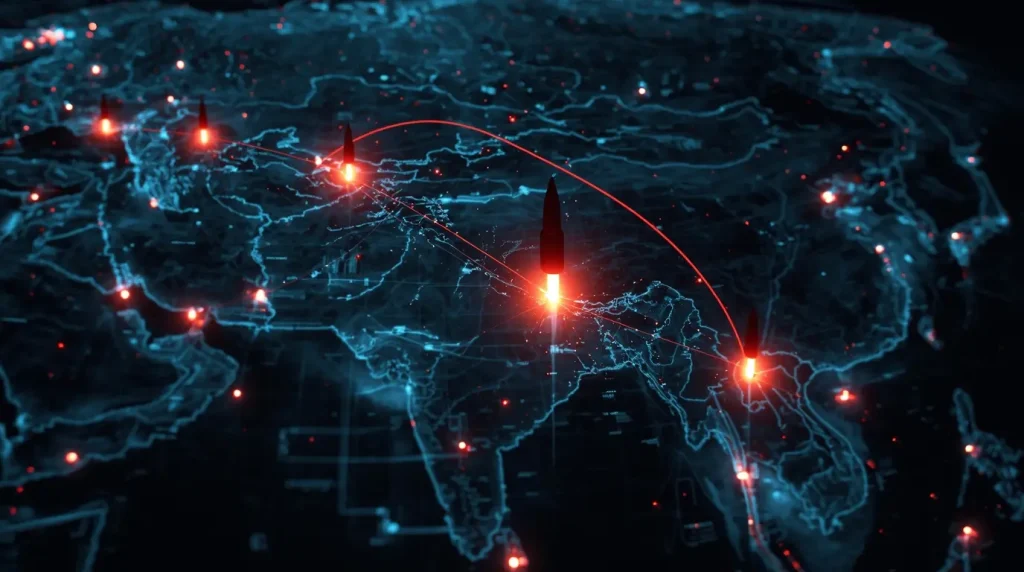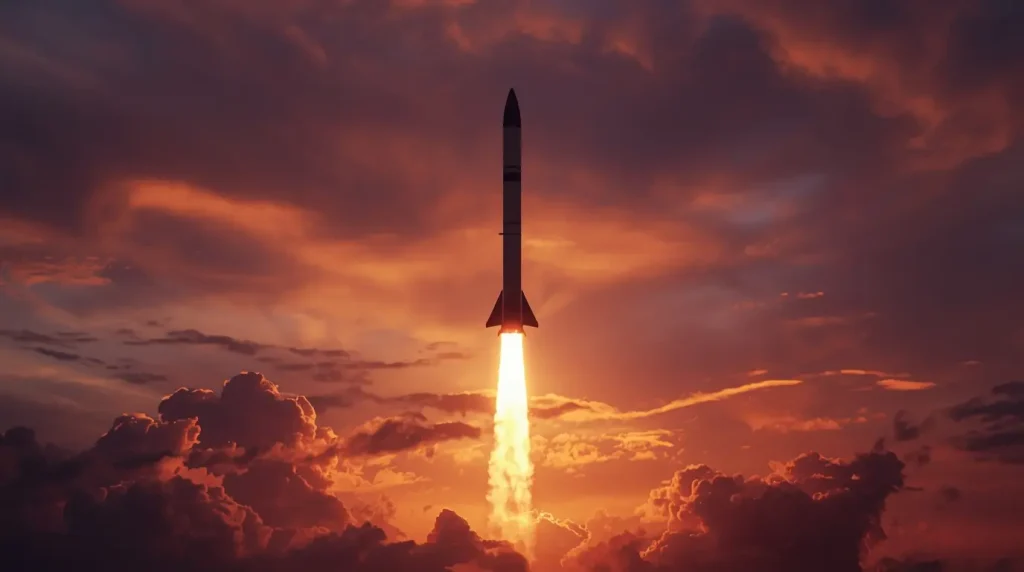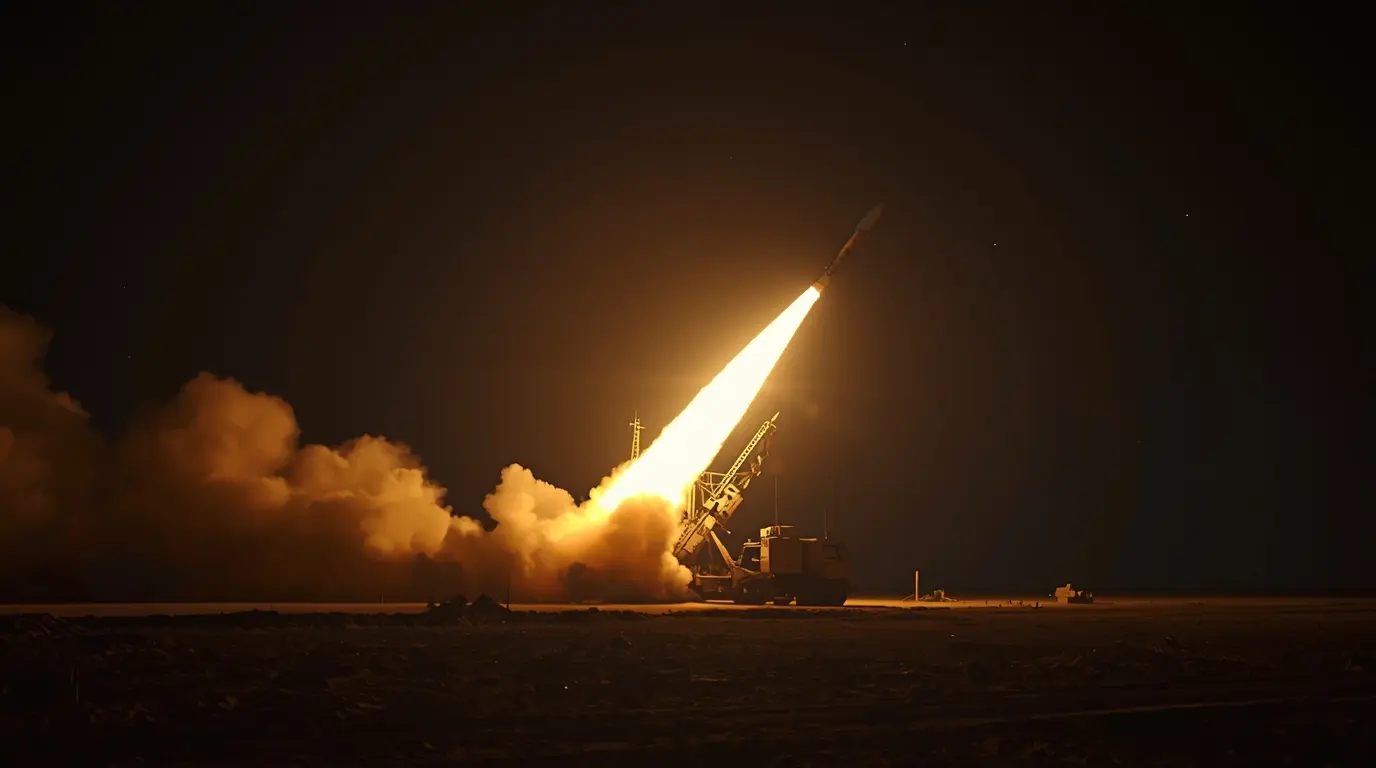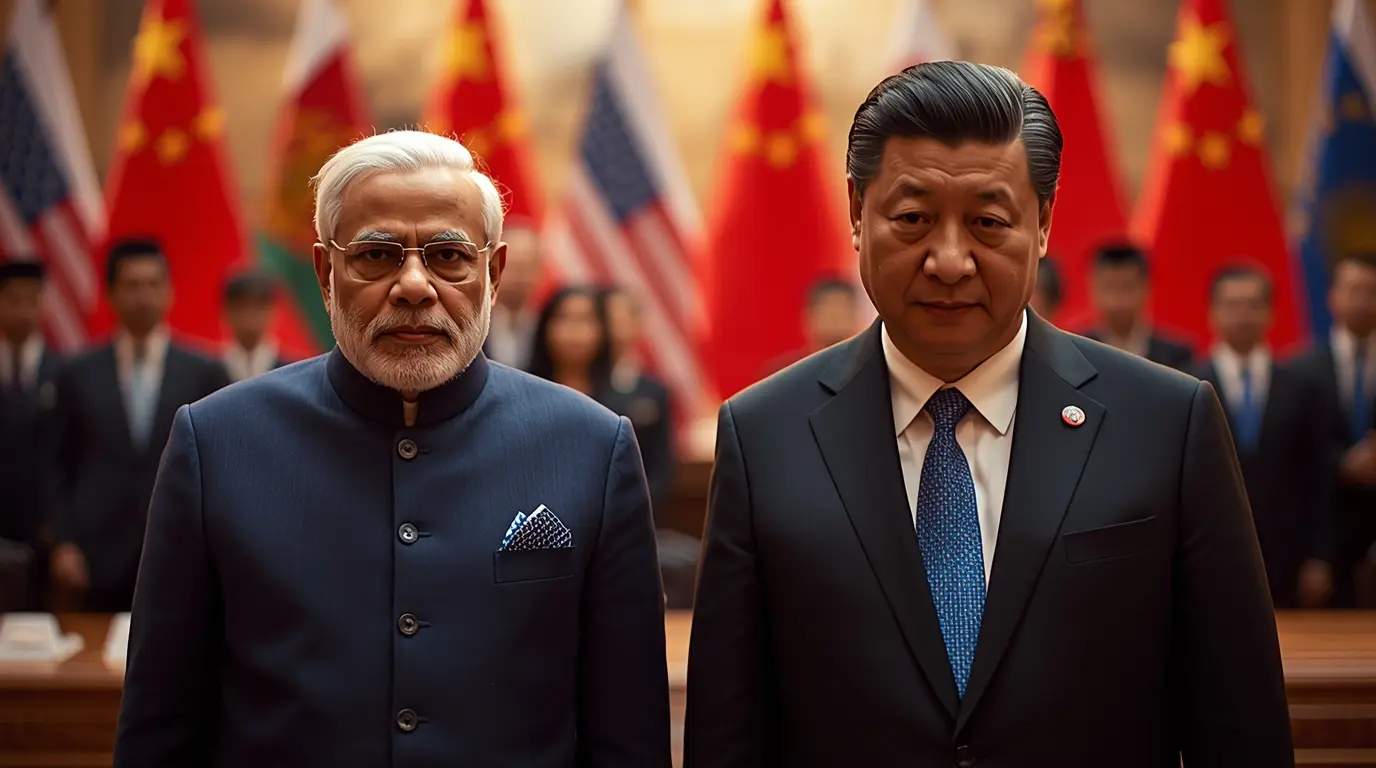New military activities in South Asia are changing the region’s strategy and India testing the Agni-V missile is at the forefront. This intermediate-range ballistic missile significantly alters the ability of a region’s power to project power. Although the context is India-Pakistani hostilities, the Agni-V capabilities are not limited to its western rival and targets a considerable part of China. This article discusses the modern arms race and the technologies, doctrines, and geopolitical relations that will influence the continental future.
Agni-V: Transforming Strategic Deterrence
India’s Agni-V is a true engineering marvel. It is a solid-fueled, three-stage missile with a length of 7,000 to 8,000 kilometers. Considered an intermediate-range ballistic missile (IRBM), its capabilities are on par with closer range inter-continental ballistic missiles (ICBM). The Agni-V is a launch weight of 50,000 kilograms, outstracing other missiles with its Mach 24 speed. Furthermore, Agni-V is engineered for continued endurance. It is road-mobile, canisterized, and its swift transport means it can be launched from several areas (fewer chances for pre-emptive strikes).

Agni-V’s capability to strike different targets with a single missile is termed Multiple Independently Targetable Re-entry Vehicle (MIRV), which is its critical feature. Each missile can now hold about 10-12 nuclear warheads which can be separately directed to different targets. Fortifying Indian missile defense systems, this technology poses a concern for strategists because it was successfully tested in March 2024. Recently, India’s Strategic Forces Command (SFC) tested the missile on August 20, 2025 and confirmed system readiness and operational objectives.
The Context of Pakistan: “The Conflict of May 2025”
The test of the Agni-V comes on the heels of a recent violent escalation of tensions between India and Pakistan. In May 2025, an act of terrorism located in the region of Jammu and Kashmir led to a four-day war, which included both nations ‘exchanging airstrikes, missiles, and drone strikes.’ In the process, India also attempted to perform its ‘Operation Sindoor,’ which further instigated the conflict. This war highlighted both nation’s militaries weaknesses.
Pakistan’s military intervention also displayed a lack of effective conventional strategic deterrence. This is especially true in light of its possession of missiles that are capable of nuclear warheads. Pakistan’s response to India’s use of conventionally deep striking missiles like the BrahMos was seen as “limited.” This led to the perception that something needed to change. In the month of August of 2025, Prime Minister of Pakistan, Shehbaz Sharif, created a new policy that would construct the Army Rocket Force Command.
This new command separates conventional missile systems like the Fatah-1 and Fatah-2 rockets from the nuclear systems managed by the SPD, allowing for more centralized command. Analysts such as Naeem Salik and Christopher Clary interpret this as Pakistan’s evolution providing Pakistan, “deep-strike options against high-value targets in India without lowering the nuclear threshold.” It certainly aims to counter India’s advanced conventional counterforce capabilities and what is seen as the strategy of escalatory deterrence.
The China Factor
Despite the conflict with Pakistan, the more important reason for the Agni-V is China. The missile’s range extends to almost 8,000 km, covering the entirety of Asia, northern China, and parts of Europe. This is a cornerstone of India’s strategy to enhance its nuclear deterrence against China.
India’s Agni-IV missile was not able to threaten the extreme eastern and northeastern regions of China, which includes the major economic centers on the eastern seaboard. Now with the Agni-V, these high-value strategic targets deep within China are not fundamentally held at risk.
This is particularly important to note in light of the modernization of China’s nuclear arsenal. Reported by the Pentagon, China’s nuclear arsenal is reported to have more than 600 operational warheads, with projections of surpassing 1,000 by 2030. China is also actively expanding the construction of new missile silo fields, developing more advanced ICBMs, and modernizing its nuclear triad. In light of this, the Agni-V’s deployment by India is viewed as a necessary step to maintain a nuclear deterrent against the China and Pakistan nuclear arsenal. The Agni-V is viewed not just as a counter to Pakistan, but is critical to India’s strategic balance against China.
A Triangulated Arms Race
Now, the dynamics of the security environment of South Asia have become a degree of triangulation. The reasoning behind India’s new developments, such as the Agni-V is driven by China. The new developments by Pakistan, like the new Rocket Force and acquisition of the J-10C fighter with PL-15 missiles, are all created with the intention of countering India. This makes a new, more complex, and dangerous cycle of actions that are reflexive to one another.

The conflict in May 2025 illustrates, in a matter of days, how a crisis between India and Pakistan could spiral out of control despite both countries having nuclear warheads. The situation is further complicated by both nations now possessing more refined, longer range, and more accurate conventional missiles. Not only does India gain advanced Agni-V MIRV technology, but observers in Pakistan and China also recognize the gain.
Looking Ahead: Greater Challenges in the Coming Years
The statement of Agni-V missile test signals is a strategic one. Not only does this stamp India as a major power but also as a nation possessing a credible second-strike capability. Pakistan, on the other hand, is also stepping in the direction of power by incorporating the ARFC as a component of a more sophisticated and flexible strategy, diverging from a nuclear-first approach.
The ongoing development of missile technology continues to change missile technology. The Agni-V is both a symbol and a weapon of this change—one that simultaneously keeps Pakistan in check and holds China accountable. The world is watching as these nations refine their arsenals and doctrines. The hope is that the precarious balance of terror is maintained and does not tip into conflict. The Agni-V is a part of the problem and a part of the solution. It is impressive Angi-V capabilities that ensure it’s the center of this strategic calculus. Moreover, Agni-V is a critical asset, and its development is a crucial indicator of how strategic India’s plans are. Agni-V is and remains a game-changer.

For more incredible stories of everyday news, return to our homepage.




